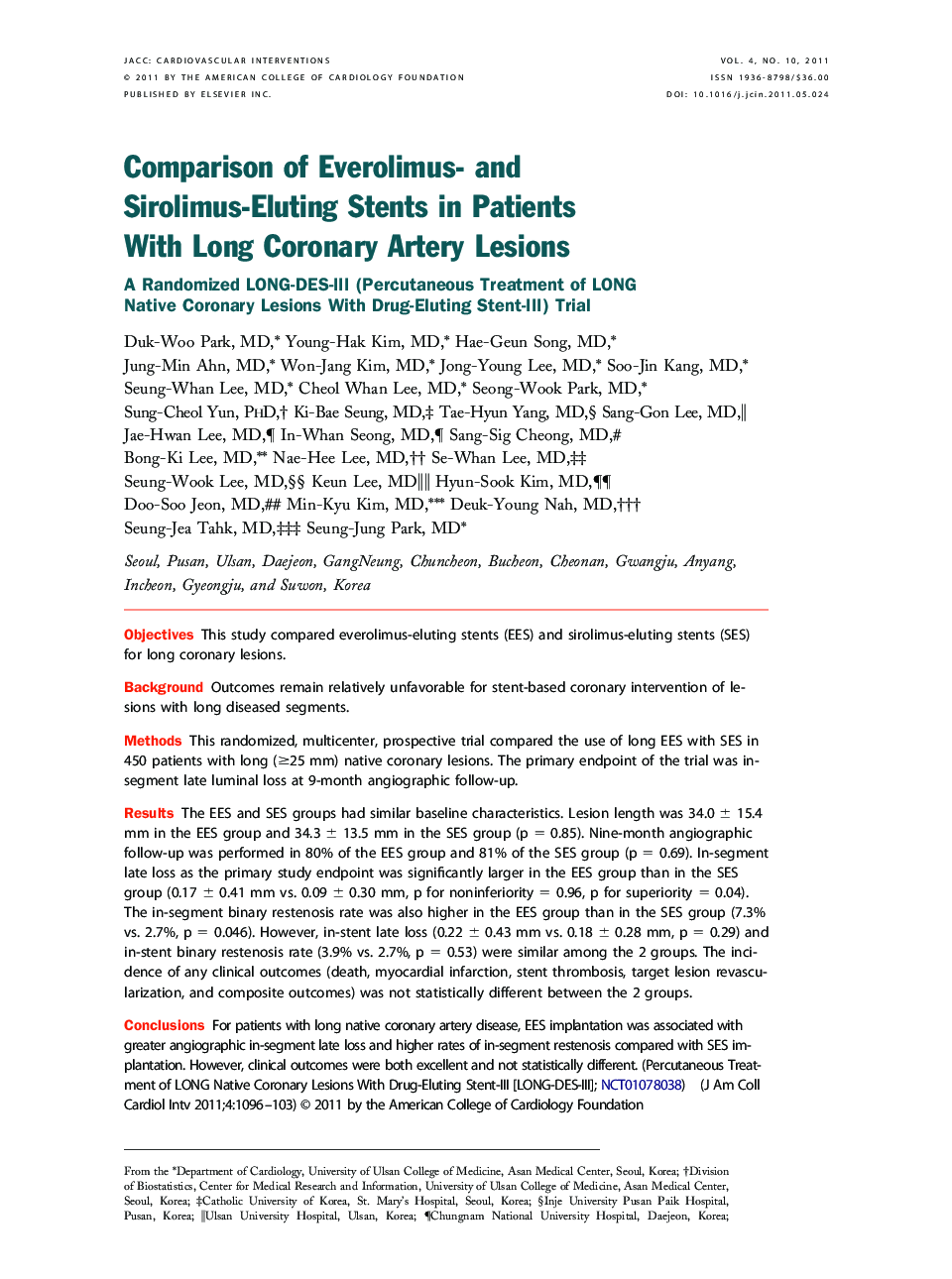| کد مقاله | کد نشریه | سال انتشار | مقاله انگلیسی | نسخه تمام متن |
|---|---|---|---|---|
| 2941322 | 1177065 | 2011 | 8 صفحه PDF | دانلود رایگان |

ObjectivesThis study compared everolimus-eluting stents (EES) and sirolimus-eluting stents (SES) for long coronary lesions.BackgroundOutcomes remain relatively unfavorable for stent-based coronary intervention of lesions with long diseased segments.MethodsThis randomized, multicenter, prospective trial compared the use of long EES with SES in 450 patients with long (≥25 mm) native coronary lesions. The primary endpoint of the trial was in-segment late luminal loss at 9-month angiographic follow-up.ResultsThe EES and SES groups had similar baseline characteristics. Lesion length was 34.0 ± 15.4 mm in the EES group and 34.3 ± 13.5 mm in the SES group (p = 0.85). Nine-month angiographic follow-up was performed in 80% of the EES group and 81% of the SES group (p = 0.69). In-segment late loss as the primary study endpoint was significantly larger in the EES group than in the SES group (0.17 ± 0.41 mm vs. 0.09 ± 0.30 mm, p for noninferiority = 0.96, p for superiority = 0.04). The in-segment binary restenosis rate was also higher in the EES group than in the SES group (7.3% vs. 2.7%, p = 0.046). However, in-stent late loss (0.22 ± 0.43 mm vs. 0.18 ± 0.28 mm, p = 0.29) and in-stent binary restenosis rate (3.9% vs. 2.7%, p = 0.53) were similar among the 2 groups. The incidence of any clinical outcomes (death, myocardial infarction, stent thrombosis, target lesion revascularization, and composite outcomes) was not statistically different between the 2 groups.ConclusionsFor patients with long native coronary artery disease, EES implantation was associated with greater angiographic in-segment late loss and higher rates of in-segment restenosis compared with SES implantation. However, clinical outcomes were both excellent and not statistically different. (Percutaneous Treatment of LONG Native Coronary Lesions With Drug-Eluting Stent-III [LONG-DES-III]; NCT01078038)
Journal: JACC: Cardiovascular Interventions - Volume 4, Issue 10, October 2011, Pages 1096–1103